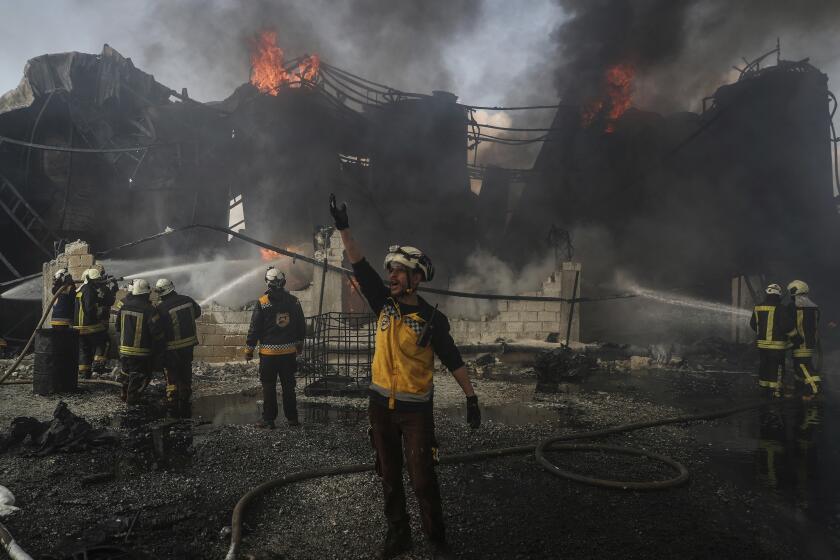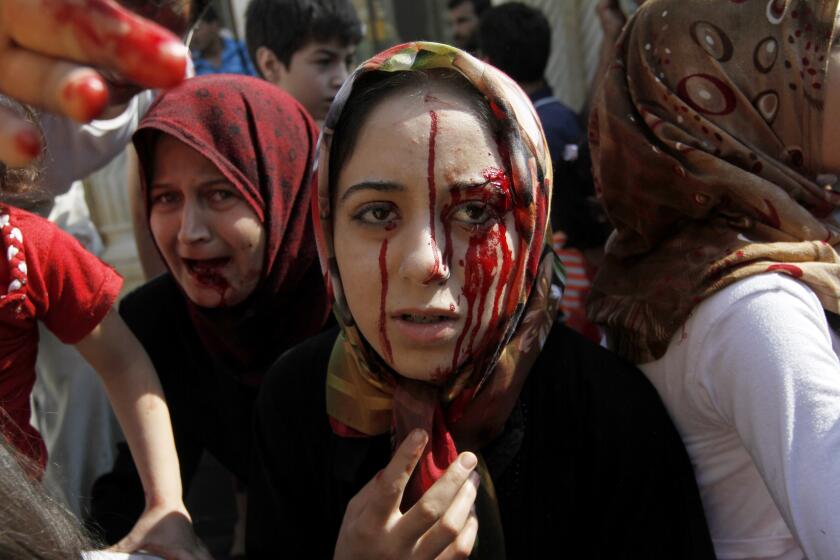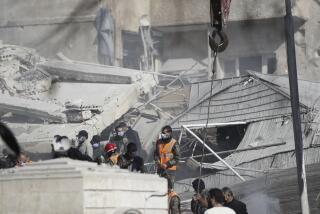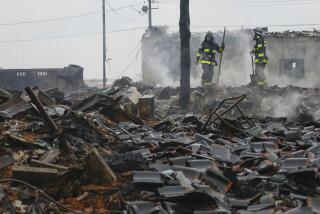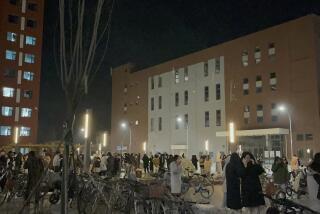Deadly earthquake exacerbates suffering of displaced Syrians
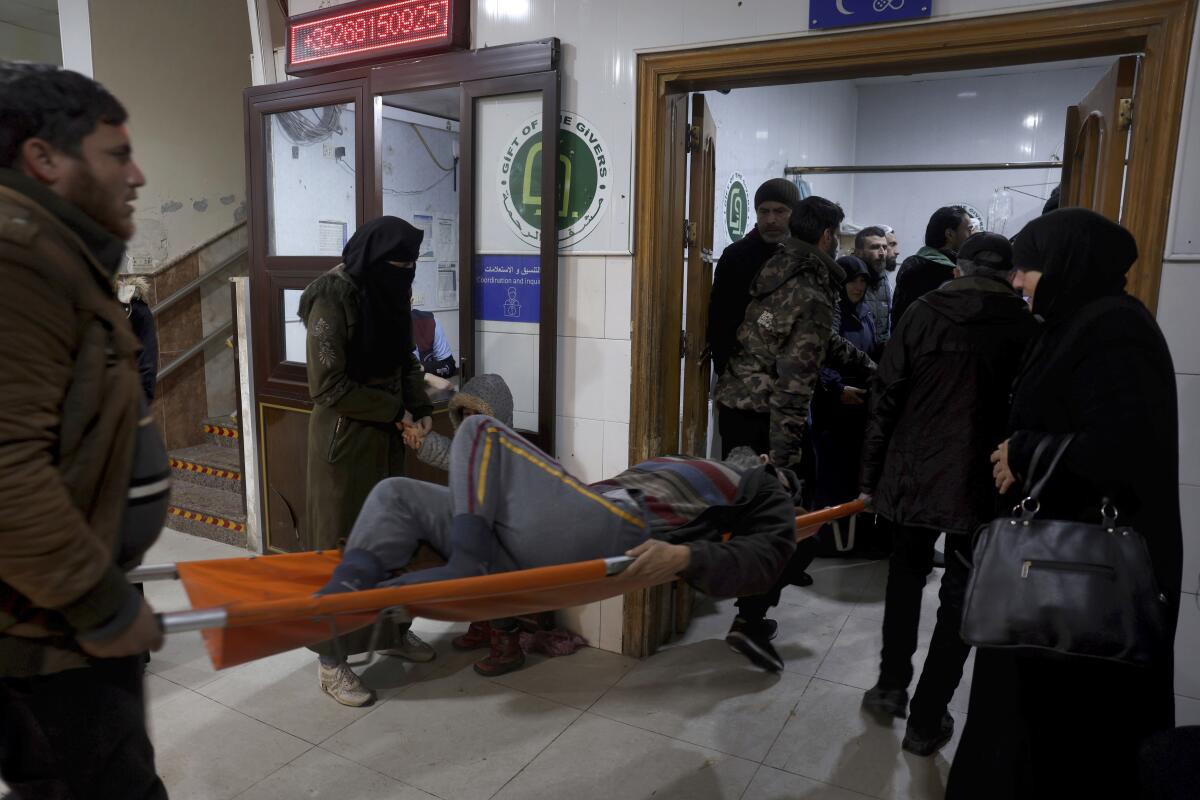
DARKUSH, Syria — A steady stream of injured were flowing into an overwhelmed hospital in the town of Darkush, in rebel-held northwestern Syria on Monday, after a deadly earthquake struck the region. Mothers hovered over crying children.
Amid the chaos, one man sat with a dazed expression, his face covered with abrasions.
The man, Osama Abdel Hamid, had barely made it out alive with his wife and four children from his apartment building in the nearby village of Azmarin. Many of their neighbors were not so lucky.
“The building is four stories, and from three of them, no one made it out,” Abdel Hamid said, breaking down in tears. “God gave me a new lease on life.”
At an equally overwhelmed hospital in Idlib city, Shajul Islam, a British doctor who works with several nongovernmental organizations, was having the worst day in his seven years of working in Syria.
“I’m literally taking a patient off a ventilator to give another patient a chance, having to decide which patient has more of a chance of surviving or not,” Islam said.
The U.N.’s deputy humanitarian chief says more Syrians need assistance now than at any time since the country’s civil war began in 2011.
The hospital, already struggling with weak health infrastructure and funding cuts, he said, was particularly overburdened after the earthquake because other hospitals in the area were out of commission.
“We’ve got quite a lot of hospitals that had been previously hit in the war. So they had already the foundations, everything had already been weakened,” Islam said. With the added blow of the earthquake, he said, “we’ve had at least three or four hospitals that I know of that have been put out of service.”
The magnitude 7.8 quake that struck before dawn Monday unleashed new damage and suffering in Syria’s last rebel-held enclave, already wrecked by years of fighting and bombardment and housing millions of displaced Syrians who had fled their homes during the country’s civil war.
Hospitals and clinics were inundated with the injured. In the enclave, centered in Idlib province, many of the displaced live in dire conditions in makeshift camps. Many others there and in neighboring government-held areas are housed in buildings weakened by past bombings and left even more vulnerable to jolts from earthquakes.
The quake destroyed or damaged buildings in at least 58 villages, towns and cities in northwestern Syria, according to the Syrian Observatory for Human Rights, a Britain-based war monitor.
Ten years later, Syria’s civil war, with its untold numbers of dead, serves as a bleak example of possibility and hope crushed by conflict and chaos.
More than 4,000 people were killed in Turkey and Syria, with the toll expected to climb. In the opposition-held territory in Syria, at least 390 were reported dead, but hundreds more were believed to be buried under the rubble of their homes.
“This disaster will worsen the suffering of Syrians already struggling with a severe humanitarian crisis,” Carsten Hansen, the director for the Middle East at the Norwegian Refugee Council, said in a statement. “Millions have already been forced to flee by war in the wider region and now many more will be displaced by disaster.”
At the hospital in Darkush in western Idlib, Abdel Hamid told of how he and his family were sleeping in their apartment when they were roused by powerful, prolonged shaking. They ran from the apartment, but “before we reached the door of the building, the whole building came down on us,” he said.
A wooden door shielded them from the worst force of the collapse — they all got out alive. He and his wife and three of the children suffered head injuries but are all in stable condition.
The scale of the casualties quickly overwhelmed the hospital’s resources, said Majdi Ibrahim, a general surgeon at the facility.
“We need urgent help. The danger is beyond our capacity,” he said.
The Syrian American Medical Society, which runs hospitals in northern Syria and southern Turkey, said in a statement that its facilities are “overwhelmed with patients filling the hallways” and called urgently for “trauma supplies and a comprehensive emergency response to save lives and treat the injured.”
Breaking News
Get breaking news, investigations, analysis and more signature journalism from the Los Angeles Times in your inbox.
You may occasionally receive promotional content from the Los Angeles Times.
The opposition in the northwestern corner of Syria has held out for years even after Syrian government forces retook most rebel-held areas around the country.
Fighting still flares from time to time with Russian-backed Syrian forces nearby. Parts of the territory are run by rebel groups, including a dominant Al Qaeda-linked militant faction, while others are under a Turkish-backed administration known as the Syrian interim government.
The disaster came on the heels of severe winter storms, further adding to the misery of those left without shelter.
“There is rain and the weather is very cold, there is snow in some of the areas,” Abdel Hakim Masri, economy minister with the Turkish-backed regional administration, told the Associated Press. He noted that some of the displacement camps in the area had been decimated by the quake.
Masri said that efforts are underway to find temporary shelter for the people now doubly displaced by the earthquake, but that the response required is well beyond the local resources available.
“There is a huge amount of suffering, and this will increase it,” he said. “This matter calls for rapid action by all countries of the world.”
Sewell reported from Beirut.
More to Read
Sign up for Essential California
The most important California stories and recommendations in your inbox every morning.
You may occasionally receive promotional content from the Los Angeles Times.
